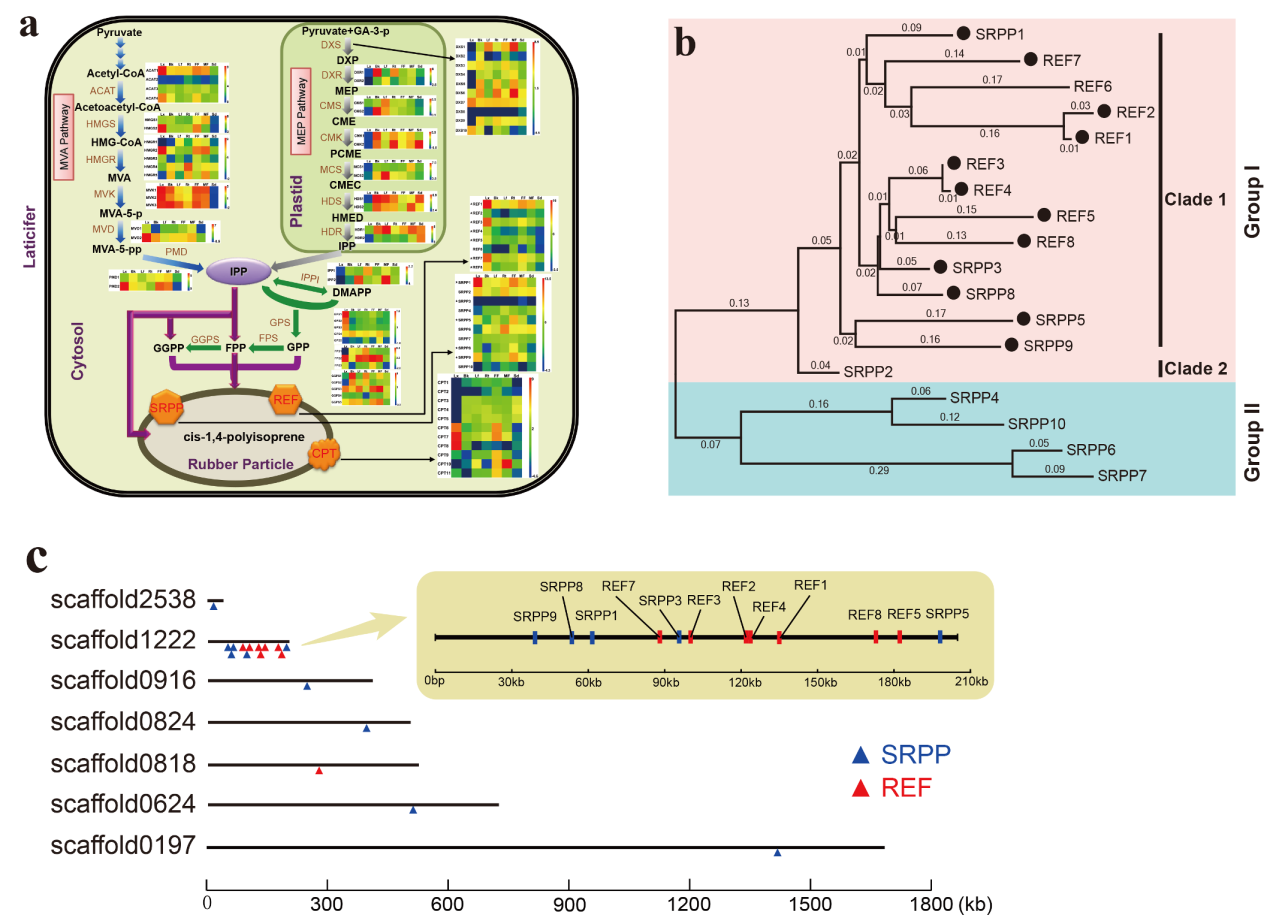Rubber Tree Genome Unlocks Secrets in Species Adaptation and Rubber Production
The rubber tree (Hevea brasiliensis) is an economically important species for its product, natural rubber. As an industrial commodity, natural rubber is an elastomer with excellent physical and chemical properties that cannot be fully matched by petroleum-derived synthetic rubber. Why can rubber tree be more productive than other rubber-bearing plants? Is this a trait that benefits the species adaptation? Why can ethylene bark treatment significantly increase the rubber yield? These intriguing issues prompted a research team including scientists from the Beijing Institute of Genomics, Chinese Academy of Science and the Rubber Research Institute, Chinese Academy of Tropical Agricultural Science to decode the genome of this tree species.
The team sequenced an elite rubber cultivar (Reyan7-33-97) that is widely planted in China using the next-generation sequencing technology and generated a 1.37Gb high-quality genome assembly covering about 94% of the predicted genome size. The expansion of vast repetitive elements makes the genome size of rubber tree apparently larger than its closely related species, such as cassava, castor oil, cottonwood, and flax. Consistent with most other dicots, the rubber tree has experienced at least two rounds of either whole genome or large fragments recent duplications. Comparative study of genetic variation revealed that the respiratory electron transport chain and defence response related genes are mostly located in low mutation regions.
An apparent expansion was observed in the REF/SRPP gene family, a well-known participant of rubber biosynthesis. A member of this family, REF1, was much more highly expressed in latex than the others, indicating its predominant role in rubber production. Evolution analysis among the REF/SRPP members of the rubber tree and 17 other plant species revealed that REF1 is special for its smaller size, and its emergence is a recent event that might have endowed the modern Hevea’s capacity for high rubber production. Profiling differential expression of the genes in the latex responding to ethylene treatment led the team to conclude that the stringent control of ethylene synthesis under active ethylene signaling and response in laticifers account largely for ethylene stimulation in rubber production.
This work is important for both basic and applied studies in rubber tree, just as stated in the recent paper published online in Nature Plants “The data from this study, together with other public resources, pave a way for whole genome association studies, germplasm improvement and genetic modification of Hevea to meet increasing global demand for natural rubber”.

Rubber biosynthesis and expansion of the REF/SRPP gene family in Hevea (Image by HU Songnian group and TANG Chaorong group)
Contact:
Prof. HU Songnian
Email: husn@big.ac.cn